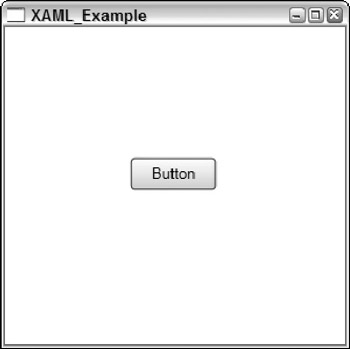Chapter 26: XAML
Overview
One of the newest technologies in the programming world is XAML-an XML language used to write applications on the Windows Presentation Foundation (WPF). XAML stands for Extensible Application Markup Language. This new way of creating applications within a Microsoft environment was introduced in 2006 and is part of the .NET Framework 3.0. So when you run any WPF application, you must have the .NET Framework 3.0 installed on the client machine. WPF applications are available for Windows Vista, Windows XP, and Windows Server 2003 (the only operating systems that allow for the install of the .NET Framework 3.0).
XAML is the XML declaration used to create a form t represents all the visual aspects and behaviors of the WPF application. Although it's possible to work with a WPF application programmatically, WPF is a step in the same direction the industry is heading-towards declarative programming. Declarative programming means that instead of creating objects through programming in a compiled language like C#, VB, or Java, you declare everything through XML-type programming. For instance, you can declare a basic WPF form (with only a single button on the form) as shown in Listing 26-1.
Listing 26-1: Window1.xaml
<Window x: xmlns="http://schemas.microsoft.com/winfx/2006/xaml/presentation" xmlns:x="http://schemas.microsoft.com/winfx/2006/xaml" Title="XAML_Example" Height="300" Width="300"> <Grid> <Button Margin="107,112,110,132" Name="button1">Button</Button> </Grid> </Window>
In this case, the form is declared with XAML using the <Window> element as the root element of the XML document. The <Grid> element defines the entire design surface of the form, and the form contains a single button using the <Button> element. Running the application produces the results presented in Figure 26-1.

Figure 26-1
With Web technologies and Microsoft's Windows Forms already available, why was another presentation technology needed? The next section answers this question.
EAN: 2147483647
Pages: 215